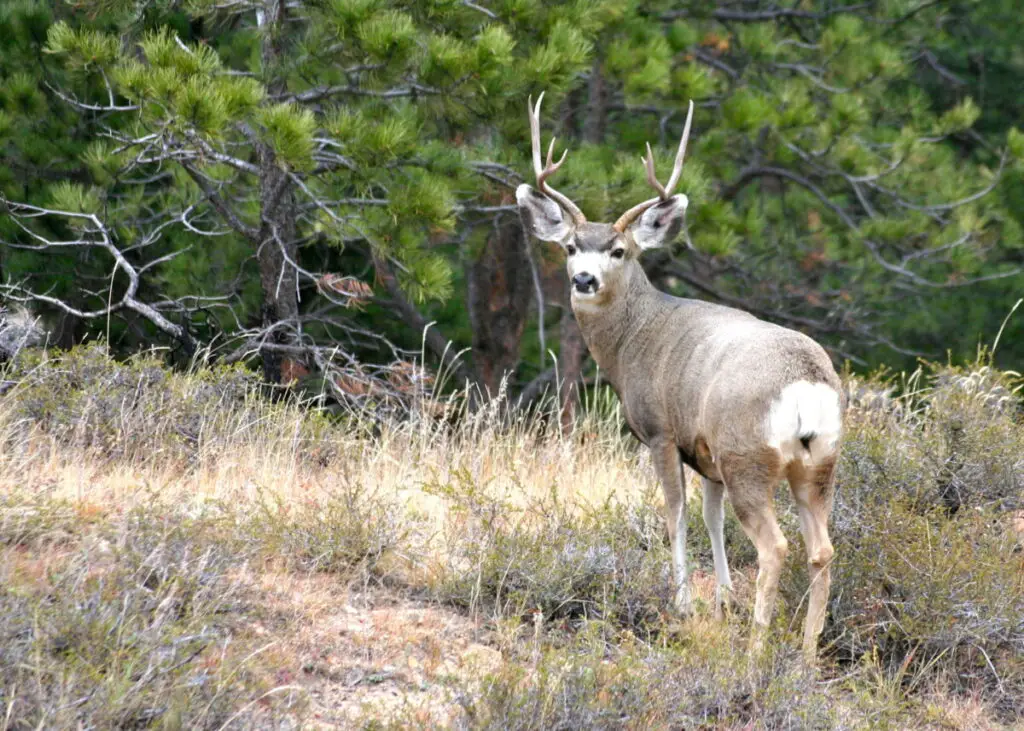
Tracking is a primitive form of finding your elk or deer this year. For all the years I have been hunting, I have never seen anyone actually follow tracks with the objective of closing the distance with an animal for a shot. Well, I have decided that I want to add this technique to my hunting toolbox and started researching. This is what I found out.
There are subtle signs you can look for when tracking to determine the age of the tracks and if the animal that left them is male or female. Things to look for when determining the sex of the animal that left a track, are things like the size, width, and how deep the track sinks into the ground.
Tracking is an art more than a science, but with a little know-how, you can perhaps use this technique to your advantage.
Telltale Signs
You will not get a better chance to follow fresh game tracks than right after it snows. That is because right after a new snowstorm, you know the tracks have to fresh to be able to see them. However, these same principles can be used on dry tracks as well.
Some things to look for are if there is any new snow on top of the imprint. This can tell you how fresh they are. This could be the difference between the animal being a few hundred yards from you or miles away. So a technique that renowned professional hunter, Remi Warren uses, is the make-your-own print next to it for comparison.
This actually works on dirt tracks as well. Step next to the track and see how it compares to the animal’s track. Was there any snow that fell into your track? Does your track look fresher and more clear? Touch both tracks. Is the animal track more frozen and hard compared to yours? This can tell you just how long ago a track was made.
Droppings
When it comes to looking at droppings, the best way is judge how long ago it was taken is by taking a stick and poking it. Is it soft? If so there is a pretty good chance it’s not that old. If it breaks open then it has been dried out and probably taken some time ago since all the moisture has evaporated out of it. It’s important to poke it because some deer and elk droppings can look fresh on the outside, but there actually aged.
Determining Sex
In the animal kingdom, almost all the males are larger. This is no different when it comes to elk and deer. The tracks made by a male will be predominantly larger. They will be wider and taller in most cases. To determine elk tracks, you will be looking for a track that is too big to be a deer but not massive enough to be a beef cow.
Also in both deer and elk, the males tend to have split hooves in their front tracks from the weight on the front halves of their bodies.
Mule Deer

Marc Smith on the Finding Backcountry Podcast shared a few great tips on tracking mule deer. He said that mule deer tend to travel with the wind blowing into their backside.
This is a defense mechanism so they can smell any predators that may be following them. So if you decide to track a mule deer, you should locate the general direction where the deer is heading and then read the landscape.
Think about any benches or tree patches the deer may want to go bed down in. Then get off the direct trail and try to parallel it or just head to the most likely area the buck may be heading. Keep in mind deer will be looking in the direction they just came, so try to stay above them in your approach to the area.
Closing In
When you get to the area where you think the animals will be, you have got to be on the lookout. Glass everything in sight. It’s very likely the animal could be bedded by the time you catch up to them. You have to spot them before they spot you. You need to adapt that primitive mindset. Be a good predator and pay attention to everything around you.
Practice
I’m guessing fall isn’t the only time you go out in the woods. If you are out on a fishing trip or maybe scouting the month before the elk or deer season, you can practice your tracking. Try and find a fresh set of tracks, and see where they take you. See if you can catch up to the animal that made them.
If you glass up a deer or elk, watch where they start and end up. Then go over to where it was and see what the tracks look like. The more you see what a fresh track looks like, the more you will notice the differences in an older track.
Elk Tip:
When it comes to elk, if you end up spooking an elk while tracking, they have been known to sometimes circle back around. No one knows for sure why this happens but one theory is that an elk has spent a lot of energy finding the area where they live.
The area has everything it needs and so it will try and stay in the area.
Elk circle back around to try and smell you to verify if the threat is still in the area. So if you have the time, it may be worth it just to sit down for an hour or two and see if the elk returns. Just keep the wind in your favor, and glass the most likely path of return.
Time To Get Started
I intend to start using this tactic a bit more when I am in the woods. It’s an offensive tactic that can be used on slow days. I hope you have learned a thing or two that got your wheels turning, so get out there in the field and see if any of these tactics help you find some game this season.
If you enjoyed this article, here are some more helpful articles from Pinetrees And Solitude.
- What You Need For An Idaho Mule Deer Hunt
- Catch Mule Deer While They Are Active
- What Should I Bring Elk Hunting? Idaho List
- Hunting Elk In Timber: Tactics To Even The Odds
(This article was originally published on Pintreesandsolitude.com. If it is now published on any other site, it was done without permission from the copyright owner.)
